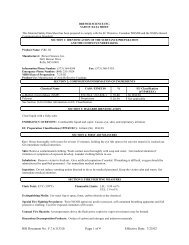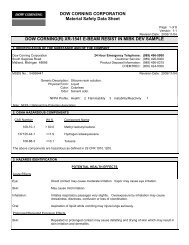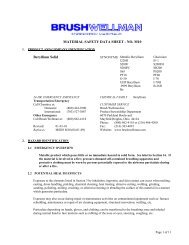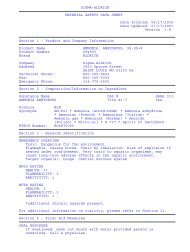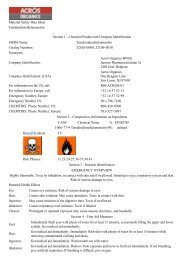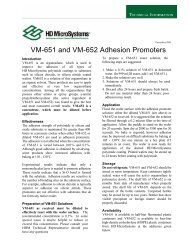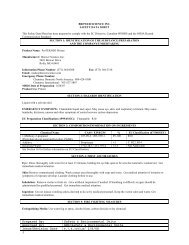Radiation tolerant sensors for the ATLAS pixel detector
Radiation tolerant sensors for the ATLAS pixel detector
Radiation tolerant sensors for the ATLAS pixel detector
Create successful ePaper yourself
Turn your PDF publications into a flip-book with our unique Google optimized e-Paper software.
330<br />
R. Wunstorf / Nuclear Instruments and Methods in Physics Research A466 (2001) 327–334<br />
As crystal defects are responsible <strong>for</strong> <strong>the</strong> radiation<br />
induced changes of<strong>the</strong> sensor parameters, <strong>the</strong><br />
approach of<strong>the</strong> ROSE collaboration was to alter<br />
<strong>the</strong> defect kinetics by controlled introduction of<br />
individual impurities in <strong>the</strong> silicon crystal [13,14].<br />
After <strong>the</strong> first step of getting <strong>the</strong> necessary<br />
processing developed and silicon <strong>detector</strong>s produced,<br />
<strong>the</strong> ROSE collaboration tested <strong>the</strong>m under<br />
irradiation with high energy neutrons and charged<br />
hadrons. While almost no difference in <strong>the</strong> radiation<br />
induced parameters were found under neutron<br />
irradiation, much improvement was observed<br />
under irradiation with charged hadrons <strong>for</strong> silicon<br />
with high oxygen content [15]. The improvement<br />
concerns only <strong>the</strong> radiation induced change of<strong>the</strong><br />
doping concentrations, while <strong>the</strong> current and<br />
charge collection parameters are <strong>the</strong> same.<br />
The different responses ofoxygenated silicon to<br />
neutrons and charge hadrons indicates that <strong>the</strong><br />
improvement due to point defects, may be caused<br />
by an introduction ofdonor-like defects compensating<br />
part of<strong>the</strong> ‘unwanted’ acceptors, which<br />
would <strong>the</strong>re<strong>for</strong>e be cluster related. Although <strong>the</strong><br />
defect kinetics of oxygen in silicon is not fully<br />
understood and it might be a different mechanism,<br />
it is interesting that already, several years ago,<br />
oxygen was thought to be a candidate <strong>for</strong><br />
improvement, when it was observed that close to<br />
<strong>the</strong> surface, where <strong>the</strong> oxygen diffuses in during a<br />
normal oxidation process, <strong>the</strong> silicon does not<br />
convert to p-type behavior, even though <strong>the</strong> bulk<br />
has been converted [16].<br />
Several tests with different oxygenation processes<br />
at different vendors and different starting<br />
materials have confirmed <strong>the</strong> improvement of<br />
silicon in <strong>the</strong> following three aspects [15,17]:<br />
* reduction of<strong>the</strong> stable damage,<br />
* reduction of<strong>the</strong> amount ofreverse annealing,<br />
and<br />
* deceleration of<strong>the</strong> reverse annealing.<br />
Fig. 3 shows, <strong>for</strong> example, <strong>the</strong> improved behavior<br />
of<strong>the</strong> effective doping measured directly after<br />
irradiation, due to <strong>the</strong> reduction of<strong>the</strong> stable<br />
Fig. 3. Comparison ofoxygen enriched silicon (DOFZ-silicon) with standard silicon in <strong>the</strong> radiation induced change of<strong>the</strong> effective<br />
doping concentration measured after successive irradiation steps with 24 GeV protons. The DOFZ-silicon <strong>for</strong> <strong>the</strong> ROSE diodes used<br />
here were simultaneous oxygen diffused with <strong>the</strong> second prototype <strong>ATLAS</strong> sensor wafers.


